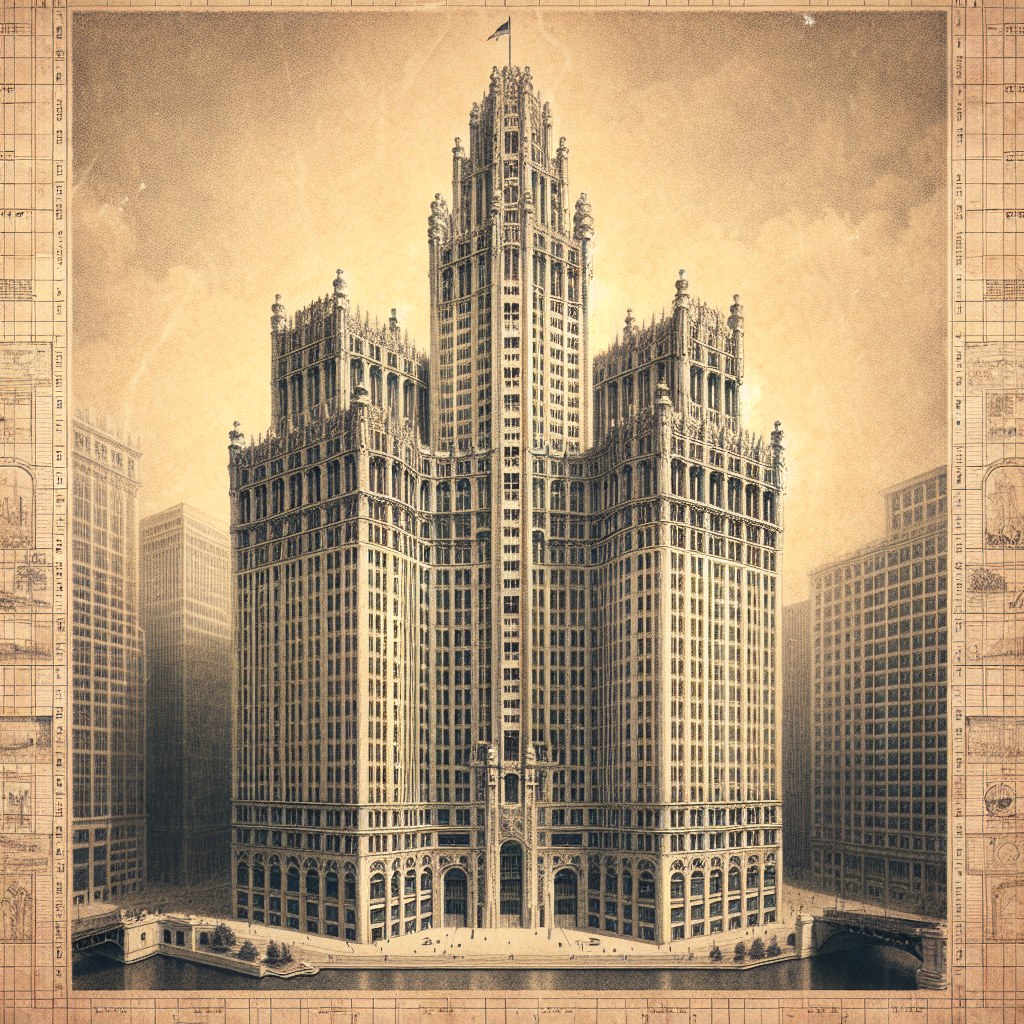Architecture That Touches the Sky: New York Life Insurance Building in Chicago
Imagine standing on a bustling street of Chicago, your eyes trailing upward to the soaring heights of a historical skyscraper. The New York Life Insurance Building, a beacon of Chicago’s architectural prowess, marks more than a location; it embodies a vibrant story of innovation, resilience, and transformation. Located on LaSalle Street, this magnificent structure emerged like a phoenix from the ashes of the Great Chicago Fire, serving as a beacon of progress in the rapidly advancing urban landscape.
Constructed in 1894, under the meticulous eye of architect William Le Baron Jenney, the New York Life Insurance Building represents a pivotal moment in skyscraper design. Its significance is not merely in its height but in the steel-frame construction technique it pioneered, which has irrevocably changed the skylines of our most iconic cities ever since. This brilliant engineering feat not only allowed buildings to stretch to unimaginable heights but also addressed and overcame the two pivotal dilemmas faced by architects of its time — fire safety and structural integrity.
Historical Context: Architecture’s New Dawn in Chicago
To truly appreciate the marvel that is the New York Life Insurance Building, one must understand the climate in which it was born. The late 19th century was a period of dramatic and dynamic urban rebirth for Chicago. The city had been devastated by the Great Fire of 1871, an event that inadvertently became the catalyst for an architectural renaissance. Out of necessity and ambition, a new wave of architects began experimenting with innovative designs and materials to build taller, stronger, and more resilient buildings.
Enter William Le Baron Jenney—credited as the "Father of the American skyscraper"—who seized this opportunity to trial his novel construction approach. Implementing a skeleton frame of steel, the New York Life Insurance Building stood at 192 feet, briefly dominating the city’s skyline. This was truly revolutionary, symbolizing a seismic shift from traditional load-bearing masonry walls to modern architecture.
The Architect and His Vision
Who was William Le Baron Jenney, and why was he eager to rethink building design? As a military engineer, Jenney's experience with light steel framework during the Civil War undoubtedly influenced his later architectural career. His engineering prowess delivered a new kind of strength and flexibility in building design, which laid the groundwork for the skyscraper era.
His design philosophy harmonized structural ingenuity with functional elegance, ushering urban architecture into a new age. The New York Life Insurance Building is considered a stylistic transition too, where Jenney captured the essence of neoclassical design while embracing the architectural daringness allowed by steel-frame construction. This amalgamation represented a visionary optimism about the potential of modern architecture to enhance the urban experience.
Architectural Detailing and Features
As you admire the New York Life Insurance Building, several architectural characteristics cannot be missed. The building’s façade showcases Jenney's skillful blend of function and form—a balance between ornamental design and structural efficiency. Its compact yet impressive ten-story layout was not only aesthetically pleasing but also crucial in cementing skyscrapers as essential components of urban cityscapes.
One of the building's defining features is its use of terra cotta ornamentation, a popular material at the time, known for its aesthetic appeal and fire-resistant properties. Terra cotta cladding provided a compelling visual texture and elegance while ensuring the building's resilience. The expansive use of large plate glass for windows also set a precedent in design, enabling more natural light and creating spacious, open interiors—considerations that are highly valued even today.
The Legacy and Cultural Impact
The New York Life Insurance Building’s construction marked a turning point, not just for Chicago but for the architectural community worldwide. It inspired countless architects and engineers to explore the limits of vertical urban architecture. Beyond its size and structural innovations, the building represents the unyielding spirit of Chicago—a city that constantly moves forward, one innovative step at a time.
Chicago’s skyline is a history book of architectural development, with the New York Life Insurance Building as one of its most significant chapters. The adoption of steel-frame architecture precipitated an evolution in urban planning and design not just in Chicago, but globally. This revolution highlighted the interplay between technological advancements and human creativity, setting standards of what was possible and paving the way for iconic giants like the Empire State Building and the Burj Khalifa.
Reflecting on Human Endeavor and Innovation
What excites me most about this building, as I think of it through the lens of a curious explorer, is the sheer audacity of its creators and the impact of their imaginations. Its presence on Chicago’s landscape is a constant reminder of humanity’s uncanny ability to push boundaries and transform challenges into innovations. The New York Life Insurance Building is more than bricks and mortar; it is a symbol of human ingenuity, which resonates with our potential to overcome barriers.
Each time I learn about these monumental advancements, I’m reminded of just how collaborative and visionary we are as a species. This spirit of continuous learning and innovation that spurred the development of the New York Life Insurance Building rings true today as humanity faces new challenges, encouraging us all to build brighter and safer futures.
As you walk through Chicago, or simply scroll through pictures of its impressive skyline, remember that each structure is a testament to the dreams and ambitions of its time—a monument to past resilience and the inspirations they continue to instill in us.

